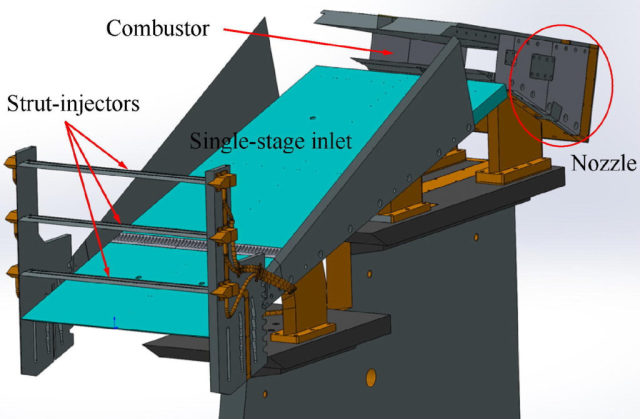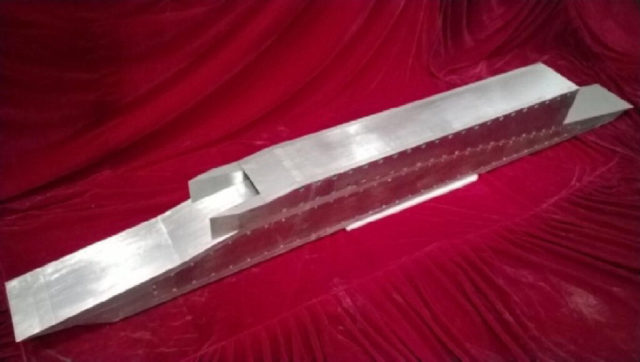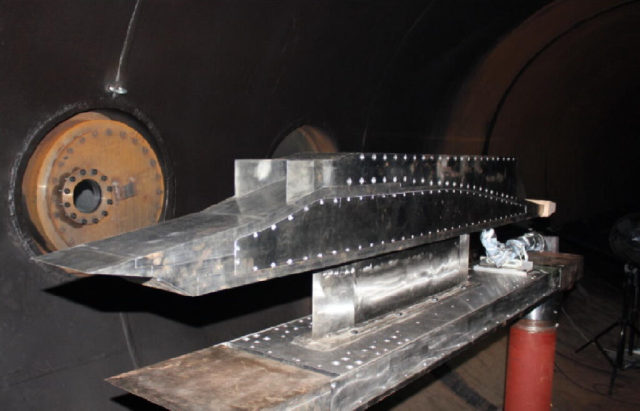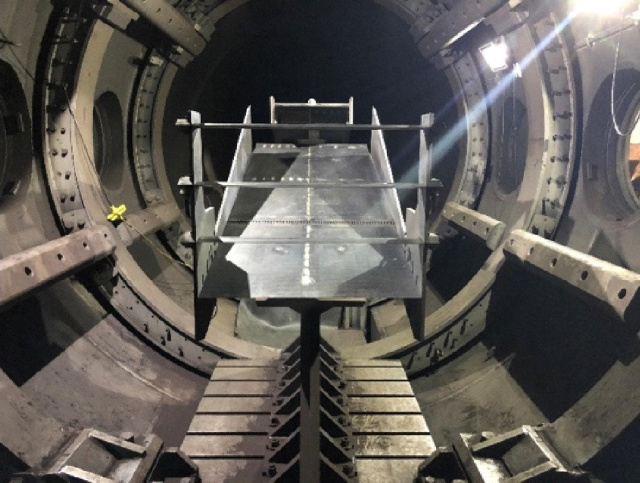The prototype of the new sodramjet ramjet engine was tested in a wind tunnel. He successfully worked at an air flow speed of Mach 9, and according to the results of the experiment, it turned out that the theoretical limit of his speed reaches Mach 16. This will allow an aircraft with such an engine to circumnavigate the Earth in two hours, but a wind tunnel to test such speeds in China has not yet been built.
Scientists from the Chinese Academy of Sciences (CAS) published a report on the prototype tests in the Chinese Journal of Aeronautics. Lead author of the study Jiang Zonglin (Jiang Zonglin) said that the development of his team will serve as the basis for the creation of reusable orbital spaceplanes and hypersonic aircraft of the new generation. The name sodramjet is derived from the phrase standing oblique detonation ramjet engine, which can be translated as RAMJET with the ignition of an inclined standing shock wave.
The engine runs on pure hydrogen and its design uses unnamed special alloys. They were created specifically for sodramjet, because the metals used in the rocket and space industry would hardly withstand the temperatures that arise in the new RAMJET. The device of the tested prototype is strikingly different from the known schemes of hypersonic ramjet engines. It implements the idea of igniting fuel with a shock wave, proposed by American researchers back in the 1960s. But half a century ago, materials science did not allow even experimental samples of such engines to be created because of their incredibly high operating temperatures.

Three-dimensional model of the sodramjet engine
Image source: Zonglin JIANG, Zijian ZHANG, Yunfeng LIU, Chun WANG, Changtong LUO, The criteria for hypersonic airbreathing propulsion and its experimental verification, Chinese Journal of Aeronautics, 2020, ISSN 1000-9361, https://doi.org/10.1016/j.cja.2020.11.001
Industry experts interviewed by the South China Morning Post suggest that these tests of the Chinese sodramjet were carried out “long ago". Usually in the middle Kingdom, such projects are hidden by a halo of strict secrecy and nothing is known for certain about their progress. The current publication of the results of the experiment in the public domain may indicate that the program for the development of hypersonic engines in China has already moved significantly further.
Engineers and scientists of the Chinese Academy of Sciences conducted an experiment in a hypersonic wind tunnel capable of creating an air flow velocity of up to Mach 9. This is approximately equal to 11 thousand kilometers per hour. The performance of the prototype during testing was stable — it worked as expected. In the course of extrapolating the measurement results, the scientists concluded that the sodramjet will accelerate steadily and operate efficiently at speeds up to Mach 16. And this is about 19.5 thousand kilometers per hour, that is, an aircraft with such an engine will fly around the entire equator in a little more than two hours.

Prototype of the sodramjet engine
Image source: Zonglin JIANG, Zijian ZHANG, Yunfeng LIU, Chun WANG, Changtong LUO, The criteria for hypersonic airbreathing propulsion and its experimental verification, Chinese Journal of Aeronautics, 2020, ISSN 1000-9361, https://doi.org/10.1016/j.cja.2020.11.001
To test the theoretical calculations will have to wait for the construction of a more powerful wind tunnel. Well, before the practical application of sodramjet may never reach. Yes, the scheme implemented by Chinese scientists demonstrates amazing indicators. In fact, the faster such an engine flies, the more efficiently it works. However, the materials used in its construction survived only short-term experiments. How they will behave during flights lasting tens of minutes is still difficult to predict.
Ramjet engines have attracted aircraft designers and rocket scientists for their simplicity and high theoretical performance since their invention in the early twentieth century. A minimum of moving parts (except that an adjustable air intake is needed), maximum efficiency at high speeds — just a fairy tale. However, they have found practical application in rather narrow areas.

Prototype of the sodramjet engine in a wind tunnel
Image source: Zonglin JIANG, Zijian ZHANG, Yunfeng LIU, Chun WANG, Changtong LUO, The criteria for hypersonic airbreathing propulsion and its experimental verification, Chinese Journal of Aeronautics, 2020, ISSN 1000-9361, https://doi.org/10.1016/j.cja.2020.11.001
The principle of operation of such engines is based on the compression of the incoming air not by a compressor, but by the shape of the air intake. Because of this, they are unable to operate at zero speed and have deplorable efficiency up to Mach 1. Supersonic RAMJET engines (ramjet), where the incoming air flow slows down to subsonic speed, proved almost impossible to accelerate beyond Mach 5. Faster-and the temperatures in the air intake and in the combustion chamber exceed all reasonable limits. At the same time, fuel efficiency drops sharply. But they have found application in anti-aircraft and anti-ship missiles, which are accelerated to supersonic speed by solid-fuel first stages.
Hypersonic RAMJET engines (scramjet) are arranged somewhat differently. In them, the air flow never slows down below the speed of sound, which allows you to expand the operating range of the engine. Judging by the data that is in the public domain, modern scramjet reach a speed of 7-8 Mach numbers. Further acceleration is prevented by the shock wave fronts appearing in the air intake, which literally tear off the flame in the combustion chamber. In addition, due to the unstable operation of the engine, the temperature also increases in an avalanche. Presumably, such RAMJET engines are installed on promising hypersonic missiles developed in the XXI century.
Theoretically, all these restrictions can be circumvented, and sometimes even by implementing some ideas "in metal". This is exactly what Chinese experts have demonstrated. However, having solved the problems with engine overheating, a similar situation arises with the aircraft. At speeds above Mach 3, the airframe of an airplane or rocket begins to warm up to temperatures at which aluminum alloys lose strength. After Mach 5, only one-time constructions can be used. To date, without the use of complex cooling systems or ablative coatings (usually disposable), it is not possible to implement a reusable hypersonic aircraft.

